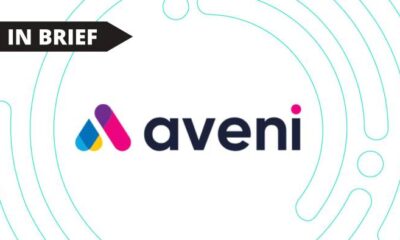Markets
Here’s how MiCA regulations will impact the European crypto market

The following is a guest post from Mike Romanenko, CVO and co-founder of Kyrrex.
The European crypto landscape is on the verge of a significant transformation with the introduction of the Markets in Crypto-Assets (MiCA) regulation. Mike Romanenko, CVO and co-founder of Kyrrex, predicts that this will present multiple opportunities and challenges for crypto players across European countries.
Expected changes after MiCA adoption
O adoption of MiCA across European countries marks a monumental shift for the cryptocurrency industry. For market participants, this regulation introduces strict rules governing several facets of the industry, including cryptocurrency exchanges, fund custody, and customer verification processes. While these rules may initially seem quite onerous, they are designed to increase the security and transparency of cryptocurrency operations.
More importantly, a primary goal of MiCA is to protect end users by ensuring that companies follow transparent auditing practices and maintain verifiable reserves. This need for transparency has become particularly evident following several collapses of major cryptocurrency companies since 2020, notably FTX Fallwhich exposed the vulnerabilities and risks within the industry.
I believe that regulation will facilitate the entry of institutional investors into the cryptocurrency market. By establishing clear and consistent rules, MiCA can help attract significant institutional and corporate funding, increasing market liquidity and stability. The situation reflects the introduction of Bitcoin ETFs in the US, which allowed institutional investors to gain exposure to Bitcoin through regulated financial products.
The challenge of implementation
Despite the long-term benefits, I never expected the initial MiCA implementation phase to be easy. Europe currently has around 2,000 Virtual Asset Service Providers (VASPs), many of which are in no rush to comply with the upcoming regulations. Local authorities will face substantial pressure to review and approve applications promptly, leading to a potential backlog and operational delays.
Some countries, such as Malta and France, have already begun to align their regulations with MiCA, but overall readiness across Europe varies significantly. I expect this disparity to result in a period of confusion and disruption as businesses scramble to meet the new standards.
The entire process is scheduled to take three years, from June 2023 to July 2026, and includes the following steps:
- Entry into force of MiCA (June 2023).
- Deadline to opt out of adopting the acquired right or reducing its duration (June 2024).
- Entry into the MiCA application (December 2024).
- End of transition phase (July 2026).
MiCA has the potential to significantly impact the cryptocurrency market within the EU. I would like to highlight the following expected effects:
- Greater consumer protection. The goal of MiCA is to establish clear rules for crypto assets, providing better protection for investors.
- Greater market integrity. By setting governance standards, MiCA aims to promote fair competition and prevent market abuse.
- Cross-border operations simplified. With a harmonised regulatory ecosystem, companies in the EU will find it easier to operate across borders.
- Driving innovations. The pilot scheme for distributed ledger technology (DLT) market infrastructures could lead to more efficient blockchain-based financial systems.
I would say the key aspect of MiCA is the new classification for crypto assets, known as CASPs: crypto asset service providers. This includes exchanges, custodian wallet providers and trading platforms, which will be subject to authorization by national authorities. The classification aims to ensure that all entities providing crypto services comply with the same regulations.
Regulatory Challenges and Opportunities in the US and Other Countries
In contrast to Europe, the US does not have a unified regulatory framework for crypto assets, which leads to significant uncertainty. While Bitcoin is classified as a commodity, the status of other digital assets, such as Ethereum, remains ambiguous. Despite what I would like to see, this lack of clarity complicates compliance and increases the risk of regulatory action against crypto companies.
However, there are many positive developments. The introduction of Money Transmitter Licenses (MTLs) for cryptocurrency exchanges has provided a path for companies to operate legally in several states. Comprehensive federal regulation is still pending and is unlikely to be addressed before the next election.
I hope that the implementation of MiCA in Europe can serve as a valuable model for other regions, including the US, UK, Turkey, and India. I would like to see that in countries like India, where crypto is currently banned, a regulatory framework inspired by MiCA could pave the way for legalized and safe crypto trading. Similarly, Turkey has faced significant challenges with unregulated exchanges, leading to substantial losses for investors. Who would have thought that adopting a structured regulatory approach could mitigate such risks and foster a healthier crypto ecosystem?
Leading the way in cryptocurrency regulation and compliance
Here are some aspects of how leaders advocate for smart crypto industry regulations to reshape the European crypto market:
- Commitment to transparency. Regulated and compliant entities leverage blockchain technology within their centralized infrastructure, increasing transparency and efficiency. This approach is evident in the implementation of blockchain technology in internal transactions. These integrations ensure that all transactions are traceable and secure, aligning with the rigorous standards expected of regulated companies.
- Strict compliance monitoring. A key aspect of regulatory compliance is the monitoring system. It includes internal compliance teams and external auditors who conduct biannual reviews to ensure adherence to all regulatory requirements. A notable feature of the compliance infrastructure is the Live Audit Log Server. It records all actions within the system, especially from the back office, providing 24/7 access to external authorities for real-time monitoring. This system ensures that any irregularities are quickly identified and addressed, reinforcing the company’s commitment to transparency and security.
- Preparing for the future through strategic investments. Strategic investments should extend beyond compliance to focus on integrating new technologies. By staying engaged with current market trends, companies aim to incorporate the latest advancements into their ecosystem. This approach not only enhances their service offerings but also ensures they remain at the forefront of industry developments.
- Expansion of regulatory licenses. The companies are working to obtain additional regulatory licenses to expand their service offerings. One of their goals is to acquire the Markets in Financial Instruments Directive (MiFID) license, which allows them to provide regulated derivatives trading in Europe. This move is poised to address a significant gap in the market by offering a transparent and compliant platform for futures and perpetuals trading.
- Adaptation to the global market. In addition to Europe, the companies are also eyeing the US market despite the current regulatory uncertainties. By obtaining Money Transmitter Licenses (MTL) in several states, they plan to strategically expand their presence in the US. This expansion underscores their commitment to navigating complex regulatory landscapes to offer safe and compliant services globally.
- Innovating for the future. The long-term vision includes developing a comprehensive financial super-app, integrating a wide range of services into a single platform. The companies are interested in leveraging blockchain technology to reduce transaction fees and improve the overall user experience, further driving adoption.
Conclusion
The implementation of MiCA represents a significant step towards establishing a safe and transparent cryptocurrency market in Europe. While I expect the transition to be challenging, the long-term benefits of improved regulation, increased institutional investment and greater market stability are substantial.
Furthermore, MiCA’s framework can serve as a model for other regions seeking to regulate their crypto markets effectively. As the global crypto industry continues to evolve, the lessons learned from Europe’s regulatory journey will be invaluable in shaping the future of digital assets worldwide.
As the cryptocurrency industry continues to mature, the importance of robust regulatory compliance cannot be overstated.
Markets
Crypto Markets Rebound as Spot Bitcoin ETFs Attract Massive Inflows

This week saw $722 million worth of Bitcoin spot ETF inflows, including the largest daily inflow in a month.
Cryptocurrency markets rallied on Wednesday, driven by inflows into spot Bitcoin exchange-traded funds (ETFs).
The price of Bitcoin (BTC) is up 3% over the past 24 hours to last change hands at $65,200, according to CoinGecko. Ethereum (ETH) is up 2% and is trading at $3,471. Solana (SUN) and Polkadot (POINT) increased by 4%.
Bitcoin spot ETFs saw $422 million in daily inflows on Tuesday, the highest in the past 30 days, according to Far side data, . The all-time record for a single day was $1.05 billion on March 12.
Among Tuesday’s top contributors, BlackRock’s IBIT led with $260 million in inflows, followed by Fidelity’s FBTC with $61 million. This week has already seen more than $722 million in inflows.
Among the top 100 cryptocurrencies by market cap, Worldcoin (WLD) led with a 28% increase, followed by Helium (HNT) with 20% and Lido DAO (LDO) with 15%.
Worldcoin, a decentralized identity project led by OpenAI CEO Sam Altman, announced is extending the lockups for early investors and team members. This means that tokens will be gradually released through 2029, instead of the original 2027 plan. Token unlocks are generally seen as a negative because they increase supply and early investors can sell their tokens for profit.
Meanwhile, XRP, the token of the XRP Ledger network, jumped 8% after the CME and CF benchmarks introduced new indices and reference rates for XRP.
U.S. stocks faced a downturn on Wednesday. The S&P 500 fell 1%, while the Nasdaq Composite and Dow Jones Industrial Average both fell 2%.
Markets
Altcoins on the cusp of a major breakout – WLD, AR, and INJ prices could surge by 20% in the coming days

Crypto markets appear to have been taken over by the bulls as major tokens have surged above their crucial resistance zone. Bitcoin surged above $65,000 while Ethereum was above $3,500, and XRP, which had remained passive for quite some time, surged over 40% in the past few days to hit $0.6. The uptrend has been captured in most altcoins, with Worldcoin (WLD), Arweave (AR), and Injective (INJ) leading the rally. Here’s what to expect for these tokens in the coming days.
Worldcoin (WLD) Price Analysis
O Worldcoin Price has been trading inside a descending wedge since it marked a new ATH near $12 in the final days of Q1 2024. The recent price action helped the price break out of the upper resistance of the wedge, breaking above the crucial resistance zone between $2.21 and $2.39. Market sentiments have changed, but technicals suggest that the bulls may remain passive for a while, which could offer some room for a bearish pullback.
The price broke out of the wedge with a significant increase in volume, but the current volume suggests that the bulls have taken a step back. Meanwhile, the RSI is about to reach the upper boundary, which could attract bearish forces. Additionally, the DMI has undergone a bullish crossover, but the decline in the ADX suggests that the rally may remain consolidated above the gains. Therefore, the WLD price is expected to maintain a horizontal consolidation between $3 and $3.3 and trigger a fresh rally to $4.4 during the next bullish rally.
Arweave (AR) Price Analysis
Arweave formed a strong base around $25, which helped the rally trigger a recovery during the bearish attack. Mt. Gox and German terror forced the price to fall below $20. However, the recent price action has brought the altcoin within the bullish range and raised expectations of maintaining a decent uptrend for a few more days.
AR price has hit one of the major resistances around $30 to $31.5, which could act as a strong base once overcome. The buying volume is slowly increasing, which could keep the bullish hopes for the rally high. Moreover, the supertrend has just flashed a buy signal, indicating a clean reversal of the trend. Therefore, AR price seems primed to maintain a healthy uptrend and rally above $40. However, if the bulls maintain a similar trend, making new highs above $50 may not be a tedious task for the bulls.
Price Analysis of Injective (INJ)
Injective price has been showing sharp strength since the beginning of the year and hence, the recent turnaround is expected to revive a good uptrend going forward. The bears engulfed the rally to a large extent, but the recent price action suggests that the bulls have regained their dominance. Therefore, INJ price is expected to maintain a strong uptrend with a bearish interference on the way down.
INJ price has surged above the lower support zone and has registered consecutive bullish candles. Although the volume is below the required levels, the OBV is maintaining a sharp uptrend. Furthermore, the Ichimoku cloud lead span B is heading towards the lead span A and a healthy crossover indicates the start of a new uptrend. However, INJ price may be out of the bears’ reach once it secures the resistance zone between $30.77 and $32.12, which seems to be on the horizon.
Markets
Ethereum at $3.5K, Exchange Supply Hits 34-Month High

Ethereum (ETH) supply on exchanges has hit a 34-month high as the asset’s price surpassed the $3,500 mark.
ETH has risen 2.3% over the past 24 hours and is trading at $3,490 at the time of writing. The second-largest cryptocurrency — with a market cap of $419 billion — briefly touched an intraday high of $3,517 earlier today.
ETH Price, Whale Activity, RSI, and Exchange Supply – July 17 | Source: Santiment
Ethereum’s daily trading volume also increased by 7.6% to reach $19.8 billion.
According to data provided by Santiment, the supply of Ethereum on exchanges has reached $19.52 million ETH. This level was last seen in September 2021, when the asset was trading around the same price.
On the other hand, data from the market intelligence platform shows that the number of whale transactions has fallen by 12% in the last day — falling from 8,730 to 7,629 unique transactions per day.
The move shows that the supply of Ethereum on exchanges has been increasing with small deposits rather than large transactions from whales.
Additionally, the ETH Relative Strength Index (RSI) is currently hovering at the 60-mark, per Santiment. The indicator shows that Ethereum is slightly overbought at this price point, but it may not be in a critical position due to its large market cap.
One of the main drivers of Ethereum price increase is ETH spot expectations ETFs in the US Investment products are scheduled to start trading on July 23rd.
Markets
Bits + Beeps: How to Play the ‘Trump Trade’ in Cryptocurrencies After the Assassination Attempt

Also, how much will the Fed cut rates (and when)? What will be the inflows into ETH ETFs? And what is the near future for Bitcoin?
Posted on July 17, 2024 at 12:00 PM EST.
Listen to the episode at Apple Podcasts, Spotify, Capsules, Source, Podcast Addict, Pocket molds, Amazon Musicor on your favorite podcast platform.
In this episode of Bits + Bips, hosts James Seyffart, Alex Kruger and Joe McCann, joined by guest Jack Platts, dive into the market reaction to the recent assassination attempt on former President Donald Trump, analyzing how this event will influence the 2024 US presidential election and the cryptocurrency markets.
They also cover potential rate cuts: Could there be a cut in July? How big could the September rate cut be? Could the decision be influenced by the upcoming election?
They also give their predictions on what percentage of BTC ETF inflows the ETH ETFs will reach, and James talks about what he expects for Grayscale’s ETHE (hint: his outlook would be positive for ETH).
Finally, they delve into what’s next for Bitcoin as the German government runs out of BTC and Mt. Gox distributions begin. Just now?
Program Highlights:
- Whether Trump’s shooting decided the election and whether the event caused a “flight to safety”
- How election markets are becoming a place to watch election probabilities and whether cryptocurrencies “lean right”
- Whether rate cuts will occur in July or September and by how much they will cut: 25 bps or 50 bps
- How Joe sees the relationship between global liquidity cycles, rate cuts, and the potential rise of Bitcoin
- What are the new updates about Ethereum ETFs and their expected launch?
- Why Solana Hasn’t Performed Significantly Better Since Trump News
- What Market Breadth Indicates About the Current Market Rally and the Impact of Rates on Small Caps
- Everyone’s predictions on ETH ETF inflows and how much outflow we’ll see on Grayscale’s ETHE
- What’s Next for BTC After German Government Exits Bitcoin and Mt. Gox Giveaways Starting This Week
Hosts:
Guest:
- Jack PlattsCo-Founder and Managing Partner of Hypersphere Ventures
-

 DeFi12 months ago
DeFi12 months agoDeFi Technologies Appoints Andrew Forson to Board of Directors
-

 Fintech12 months ago
Fintech12 months agoUS Agencies Request Information on Bank-Fintech Dealings
-

 News1 year ago
News1 year agoBlock Investors Need More to Assess Crypto Unit’s Earnings Potential, Analysts Say — TradingView News
-

 DeFi12 months ago
DeFi12 months agoSwitchboard Revolutionizes DeFi with New Oracle Aggregator
-

 DeFi12 months ago
DeFi12 months agoIs Zypto Wallet a Reliable Choice for DeFi Users?
-

 News1 year ago
News1 year agoBitcoin and Technology Correlation Collapses Due to Excess Supply
-

 Fintech12 months ago
Fintech12 months agoWhat changes in financial regulation have impacted the development of financial technology?
-

 Fintech12 months ago
Fintech12 months agoScottish financial technology firm Aveni secures £11m to expand AI offering
-

 Fintech12 months ago
Fintech12 months agoScottish financial technology firm Aveni raises £11m to develop custom AI model for financial services
-

 News1 year ago
News1 year agoValueZone launches new tools to maximize earnings during the ongoing crypto summer
-

 Videos6 months ago
Videos6 months ago“Artificial intelligence is bringing us to a future that we may not survive” – Sco to Whitney Webb’s Waorting!
-

 DeFi1 year ago
DeFi1 year agoTON Network Surpasses $200M TVL, Boosted by Open League and DeFi Growth ⋆ ZyCrypto





